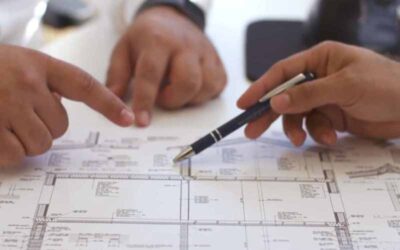In London, building control approval is a process that ensures construction and renovation projects comply with the Building Regulations in the UK.
These regulations set out minimum standards for the design, construction, and safety of buildings, focusing on key areas such as structural integrity, fire safety, energy efficiency, accessibility, and health. Building control approval is required for most types of construction or significant alterations to existing buildings to ensure that the work is carried out to a safe and satisfactory standard.
Here’s a detailed breakdown of building control approval:
1. Purpose
The main purpose of building control approval is to ensure that building work meets the technical and safety standards outlined in the Building Regulations. These regulations cover various aspects, including:
- Structural safety (e.g., ensuring that foundations, walls, and roofs are built correctly).
- Fire safety (e.g., ensuring safe escape routes, fire-resistant materials, and alarms).
- Energy efficiency (e.g., insulation, ventilation, and energy-saving systems).
- Health and hygiene (e.g., proper drainage, water supply, and sanitation).
- Accessibility (e.g., making sure buildings are accessible to people with disabilities).
- Electrical and gas safety (e.g., ensuring installations meet safety standards).
2. When Is Building Control Approval Required?
Building control approval is needed for a wide range of projects, including:
- New builds: Constructing a new house or building.
- Extensions: Adding extra rooms, loft conversions, or basement conversions.
- Major alterations: Removing or altering load-bearing walls, installing new beams, or changing the structural layout of a building.
- Installation of services: Installing or modifying plumbing, electrical, or heating systems (e.g., central heating, drainage systems, or rewiring).
- Replacement windows or doors: If they affect the energy efficiency or fire safety of a building.
- Insulation: Installing or upgrading insulation in walls, roofs, or floors to meet energy efficiency standards.
- Fire safety upgrades: Adding fire doors, alarms, or escape routes.
However, small cosmetic changes such as painting, decorating, or replacing internal fittings usually do not require building control approval.
3. Who Oversees Building Control?
In London, building control can be overseen by either:
-
Local Authority Building Control (LABC): This is the most common option, where your local council’s building control department reviews your plans and carries out inspections.
-
Approved Private Building Inspectors: You can hire a private inspector who is registered with the Construction Industry Council Approved Inspectors Register (CICAIR). They perform the same role as local authority inspectors but work independently.
4. The Process of Building Control Approval
The process typically follows these steps:
a. Submission of Plans
You submit detailed plans and specifications of the proposed work to the local authority or private building control inspector. This can be done in two ways:
-
Full Plans Application: A comprehensive submission where detailed drawings and structural calculations are provided. This is reviewed before work starts to ensure everything complies with Building Regulations.
-
Building Notice: For smaller projects (like simple alterations), a building notice can be submitted instead of full plans. This allows work to start more quickly, but the responsibility is on the builder to comply with the regulations during the process. The building control inspector will assess compliance on-site during construction.
b. Plan Checking
The building control officer or inspector will check your plans to ensure they meet the Building Regulations. They may request amendments if something is not compliant or clear.
c. Site Inspections
As the work progresses, the building control officer will carry out site inspections at key stages. These inspections might include:
- Foundations: Before the concrete is poured.
- Damp-proof course: To check that proper waterproofing measures are in place.
- Insulation: To ensure walls, floors, and roofs meet thermal performance requirements.
- Structural work: To inspect load-bearing walls, beams, and roofs.
- Fire safety measures: To ensure compliance with fire safety regulations (e.g., fire doors, escape routes).
- Final inspection: To confirm everything complies with Building Regulations before the building or renovation is signed off.
d. Completion Certificate
Once the building work is complete and has passed all inspections, the building control officer issues a completion certificate. This certificate is essential because it confirms that the work complies with Building Regulations.
Without a completion certificate, you may face issues when selling the property, obtaining insurance, or ensuring the safety of the building.
5. Cost of Building Control
The cost of building control approval varies depending on the size and complexity of the project, as well as whether you use a local authority or a private inspector. Fees typically include:
- Application fee: Paid when submitting the building control application.
- Inspection fees: Paid for each site inspection carried out by the inspector.
Local authorities often publish a fee schedule for building control services, and approved inspectors will provide a quote based on the scope of your project.
6. Difference from Planning Permission
Building control approval is often confused with planning permission, but they serve different purposes:
-
Planning Permission: Focuses on the external impact of a building or development, such as its appearance, size, and effect on the surrounding area (including neighbors). It is about the aesthetic and environmental aspects of a project.
-
Building Control Approval: Focuses on the technical and safety aspects of how the building is constructed or altered, ensuring compliance with Building Regulations.
Many projects will require both planning permission and building control approval, but some only need one or the other.
7. Consequences of Not Getting Building Control Approval
Failing to obtain building control approval can have serious consequences:
- Safety risks: Work may be unsafe, leading to structural issues, fire hazards, or other dangers.
- Enforcement action: Local authorities can take enforcement action, requiring you to reverse or modify work to meet regulations, which can be expensive.
- Problems when selling the property: Future buyers, solicitors, and mortgage lenders may request proof that any building work was carried out in compliance with Building Regulations. Without a completion certificate, you may face difficulties selling the property.
- Insurance issues: If building work is not approved and certified, it may void your building insurance, especially if any claims arise from defects in the work.
8. Common Projects Requiring Building Control Approval
Here are some examples of projects that commonly need building control approval in London:
- Loft conversions or attic conversions.
- Internal structural alterations (e.g., removing a load-bearing wall).
- Garage conversions into living spaces.
- Installing or upgrading heating systems, boilers, or hot water systems.
- Replacing windows and doors (if it impacts energy efficiency or fire safety).
- Extensions or adding a new room.
- Re-roofing and roof repairs.
- Installing cavity wall insulation or significant upgrades to thermal insulation.
Summary:
Building control approval in London ensures that construction and renovation projects comply with Building Regulations, which cover safety, structural integrity, energy efficiency, fire safety, and accessibility.
It involves submitting plans, having the work inspected at various stages, and receiving a completion certificate once the work is certified as compliant. Unlike planning permission, which deals with the visual and environmental impact of a project, building control approval focuses on the technical safety and quality of construction work.

